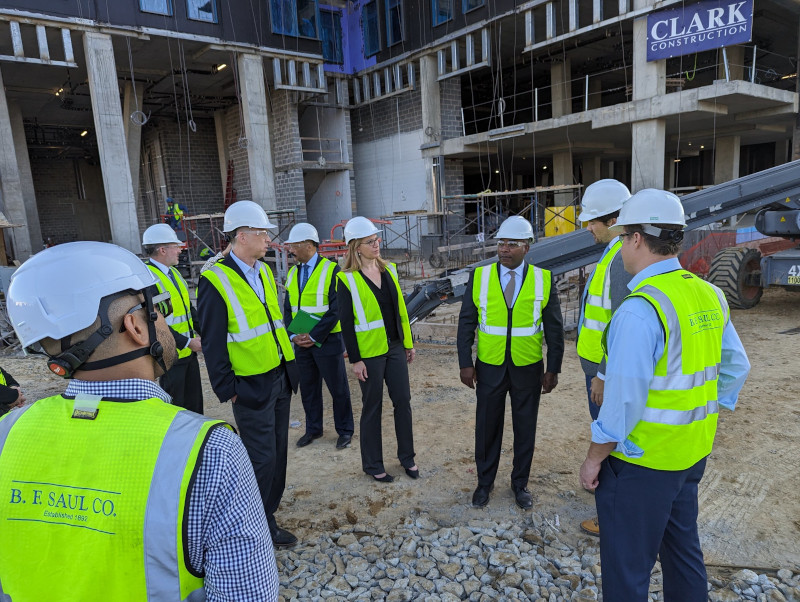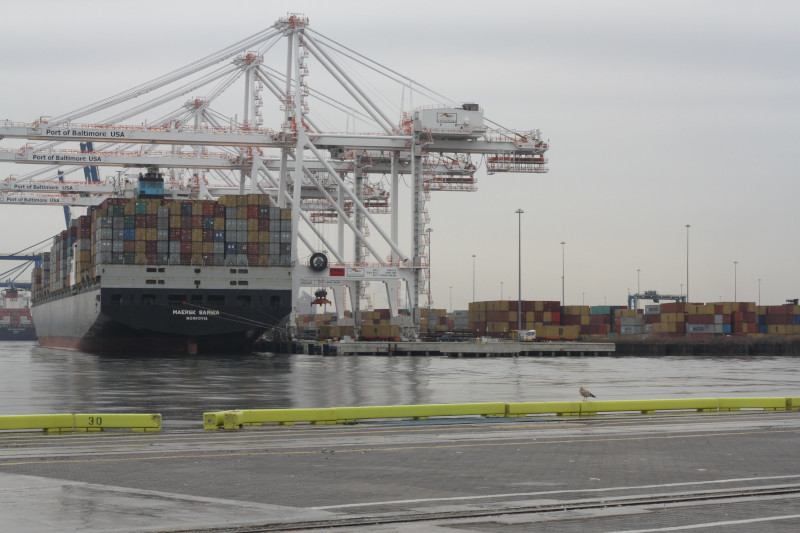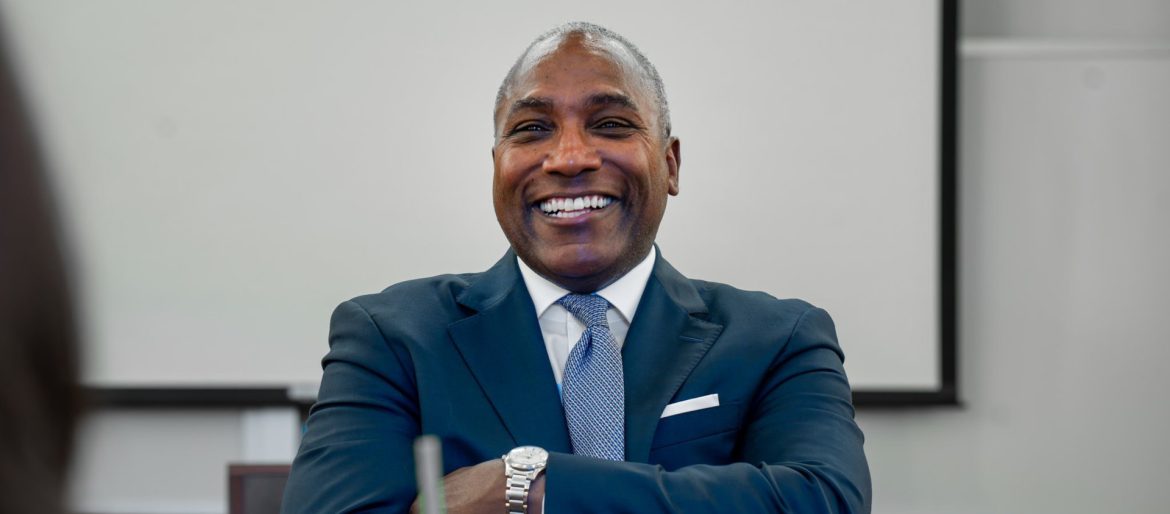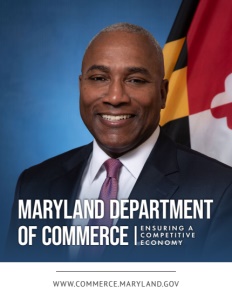Maryland Department of Commerce
Maryland Department of Commerce; Ensuring a competitive economy
Business View sat down with Maryland’s Commerce Secretary, Kevin Anderson to discuss the achievements and targets set for the Maryland Department of Commerce as we head into a new calendar year
After the challenging years of the COVID-19 pandemic and with the looming threats posed by global climate change growing larger on the horizon, Maryland Governor Wes Moore took office in early 2023 with the goal of making the state’s economy more competitive while also expanding economic opportunities for underserved communities and closing the racial wealth gap.
“We do not have to choose between a competitive economy and an equitable one,” Moore declared in his inaugural address in January.
Moore’s ambitious first legislative agenda was embraced by the Maryland General Assembly that Spring; lawmakers passed all 10 administration proposals with bipartisan support. This included accelerating an increase in the state’s minimum wage to $15 per hour; expanding tax credits for working families in order to reduce childhood poverty; and launching a first-of-its-kinds service year to help young people bridge the gap between education and the workforce.
The Moore administration also took an important step to empower minority-owned businesses with an executive order signed in February requiring more data from state agencies about the performance of the state’s Minority Business Enterprise, or MBE, program. Launched in 1978, the MBE program encourages minority- and women-owned firms to compete for state procurement opportunities. The state has annual participation goals to ensure certified MBEs are doing business with the state, but for the past two decades has fallen short of those goals nearly every year.
The additional reports from participating state agencies on MBE participation and on their outreach and marketing efforts will inform future efforts to make the program more effective.
“What we learn will enable us to strengthen our partnership with our minority-owned businesses, which in turn will help strengthen our state’s economy,” said Maryland Commerce Secretary Kevin Anderson.

Twinbrook Construction
Expanding Broadband Access
When the COVID-19 pandemic struck, businesses and schools pivoted to telework and remote learning like never before; this showed, with renewed clarity, that all Marylanders needed access to high-speed internet service; those who were not adequately connected risked losing out on employment and educational opportunities.
Legislation submitted by the Moore administration and approved by the Maryland General Assembly tasked Maryland’s Office of Statewide Broadband to study the best ways to close the digital divide in all communities throughout the state.
Governor Moore has also directed hundreds of millions of dollars in federal funding to expand broadband access, including announcing $267 million from the federal Infrastructure Investment and Jobs Act in July. Another $69 million funded through the American Rescue Plan was announced in October, and will help Maryland’s Department of Housing and Community Development bring broadband to approximately 15,000 underserved Maryland households.
“Access to the internet is no longer optional – it is essential and nobody should be locked out of the internet because of their income or where they live,” Moore said. “When it comes to getting folks online, our administration is very clear: we will not rest until every single Marylander has access to affordable and reliable internet.
Supporting the Emerging Cannabis Industry
Maryland is also supporting the small businesses and entrepreneurs exploring the state’s new market for adult-use recreational cannabis use, which became legal in Summer 2023. The new Cannabis Business Assistance Fund, administered by the Maryland Department of Commerce, began accepting applications a few weeks beforehand, with its initial round of funds focused on helping cover licensing costs for businesses converting from medical-use to recreational-use.
A second round of funds focused on social-equity applicants, meaning the funds were targeted to support businesses and communities that have been historically overlooked or disadvantaged; future rounds of funding may target cannabis-related programs at Maryland’s Historically Black Colleges and Universities and business incubators.
Facing Climate Change
As the need to address global climate change increases in urgency, Maryland has taken steps not only to improve the quality of its energy consumption, but to support innovative industries focused on producing clean, renewable energy. Governor Moore has set the ambitious goal for Maryland to produce 100 percent clean energy by 2035 and committed to a major increase in the state’s offshore wind energy production from 2 gigawatts to 8.5 gigawatts – enough to power nearly three million households. Moore also instructed state agencies to double their energy conservation goals and reduce greenhouse gas emissions by 20 percent by the year 2031.
Maryland is also fast-becoming a hub for offshore wind production, thanks to two companies with an expanding presence at the Tradepoint Atlantic multi-modal logistics hub in Baltimore County. Both Orsted and U.S. Wind have established a manufacturing presence at the site. U.S. Wind established its own steel production facility, known as Sparrows Point Steel, while Orsted is using materials produced by Crystal Steel, a local company located on Maryland’s Eastern Shore.
Those two offshore wind-focused partnerships are expected to create nearly 15,000 jobs in total.
 Maryland’s Strategic Location Fuels Growth
Maryland’s Strategic Location Fuels Growth
In recent years, Maryland’s strategic location at the heart of the Mid-Atlantic region has fueled the growth not only of Tradepoint Atlantic, but of several major logistics and distribution centers around the state. Maryland is within an overnight drive of one-third of the U.S. population, and numerous locations around the state offer easy access to interstate highways, rail lines, airports, and the Port of Baltimore.
Tradepoint Atlantic is a 3,300-acre development located at the site of a former Bethlehem Steel plant which, in its prime, was one of the largest employers in the greater Baltimore region. The new development offers warehouse space, road and rail access, and deepwater berths to accommodate large cargo vessels. Major tenants include Amazon, BMW, Under Armour, Home Depot, McCormick and FedEx. Floor & Decor announced this year that it would open its second distribution facility at Tradepoint, creating 165 new jobs; other recently announced tenants include Niagara Bottling and United Safety Technology.
Further north along I-95 is the Principio Business Park, a development spanning more than 1,600 acres that is home to warehousing and distribution facilities for tenants such as Amazon, Lidl, MedLine, Smithfield Hams. Regent Cabinet Solutions recently announced an expansion of its footprint at Principio, noting that the move would “allow us to continue to enhance delivering exceptional projects, while reducing operating costs and expediting project turnaround for our customers.”
Western Maryland is home to its own growing distribution hub, the Hagerstown Logistics Center. With more than 2.2 million square feet spread across four buildings, the center is already home to distribution facilities for Amazon and Herbalife Nutrition. Elsewhere in Hagerstown, Conair is building a new, 2.1 million square-foot distribution center – the largest in the state – and bringing 700 new jobs to Maryland.
“By locating in Washington County, the company will have convenient access to major consumer markets, as well as several highways and ground and freight hubs,” Anderson said when the project was announced in October.
The benefits of Maryland’s strategic location also include access to the Port of Baltimore which sits farther west–and therefore closer to the midwest–than any other port on the East Coast. And while the supply-chain disruptions stemming from the COVID-19 pandemic caused delays at many U.S. ports, the Port was able to accommodate a higher volume of cargo as many ships were diverted from other destinations to ease congestion. This effort was bolstered by the arrival of four massive Neo-Panamax cranes in late 2021, each of which can lift up to 187,000 pounds of cargo.
The Port of Baltimore reached a new cargo volume record in fiscal 2023, with 11.6
million tons of general cargo moved, and ranks No. 1 among the nation’s ports for the volume of autos and light trucks moved.
And cargo volumes are expected to increase again thanks to the expansion of Baltimore’s Howard Street rail tunnel, a long-gestating infrastructure project that will allow double-stacked containers to travel from the port via cargo train. The $466 million project, which broke ground in 2021, is expected to create 6,500 construction jobs and lead to an additional 7,300 jobs due to increased activity at the Port of Baltimore upon completion.
“With its incredible assets and strong foundation for innovation and economic growth, Maryland is preparing not just to meet the challenges of the future, but to overcome them and thrive,” Anderson said. “By using our existing strengths to attract new opportunities to our state, we’re positioning ourselves to stand toe-to-toe with any other state in the nation, while empowering our historically underserved communities like never before.”
AT A GLANCE
Maryland Department of Commerce
What: The economic office that ensures a competitive advantage
Where: Maryland, USA
Website: https://commerce.maryland.gov/


